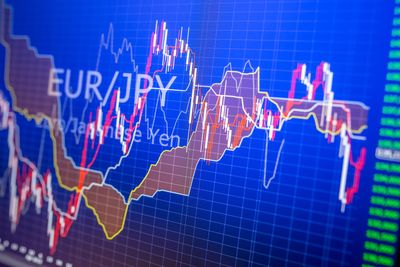Why is the Ichimoku indicator significant?
The Ichimoku indicator, invented by the Japanese journalist Goichi Hosoda in the late 1930s, has become a favored trading tool in Japan and is extensively used across various markets including equity, currency, options, commodities, futures, and bonds. Its development was also influenced by earlier Japanese trading innovations such as the candlestick method, developed by Munehisa Homma, an 18th-century rice trader. Building on this rich heritage, Hosoda conducted extensive research in the rice financial markets to develop the Ichimoku indicator. This deep historical and cultural connection underscores the relevance and reliability of the Ichimoku indicator, establishing it as one of the most robust and trusted tools in contemporary financial markets.
Goichi Hosoda, known as Ichimoku Sanjin—which literally means "What a man in the mountain sees," set out to develop a comprehensive, all-in-one indicator to aid in chart analysis. To achieve this, he gathered a large group of students and spent over two decades to manually testing various formulas and their applications to develop the Ichimoku indicator. This tool was first introduced to the public in 1969 through a book and later, the trading system was detailed in a series of seven books. Understanding the extensive effort and time invested in its development helps appreciate the depth and effectiveness of the Ichimoku indicator. Additionally, Hosoda's works not only discuss this indicator but also delve into three critical theories—Wave, Time, and Price observation—which further illuminate his comprehensive approach to understanding market dynamics.
The Ichimoku indicator elegantly demonstrates the interplay between time and price, suitable for all financial markets and across various timeframes. Its full name, Ichimoku Kinko Hyo, encapsulates its essence: 'Ichimoku' translates to 'one glance,' 'Kinko' denotes 'balance' or 'equilibrium,' and 'Hyo' stands for 'chart.' This name implies that the indicator provides a quick view of market conditions and chart balance (equilibrium) with just a single glance at the chart. A key insight from its name suggests that traders can, at a single glance, spot opportunities for high-probability trades and distinguish them from lower-probability ones.
Hosoda viewed the market as a mirror of collective human behavior, with a direct link between market movements and human interactions. He likened human behavior to a cyclical pattern, where individuals continuously drift from or move towards equilibrium in their lives. Each of the five elements of the Ichimoku indicator: Tenkan-sen, Kijun-sen, Senkou Span A, Senkou Span B, and the Chikou Span represents this concept of balance or equilibrium, designed to provide a holistic view of the market's potential directions.

Beyond the Cloud: How Ichimoku Differs from Averages
Ichimoku indicator lines exhibit considerable differences from moving averages. They align more closely with the market’s highs and lows, offering a clearer representation of these elements.
Each line within the Ichimoku indicator portrays a specific balance on the chart, determined by the period set for each line. For instance, the Kijun Sen line reflects the equilibrium over the past 26 periods, while the Tenkan Sen line does this for the past 9 periods. It's crucial to recognize that market imbalances can drive price movements. When the market is imbalanced in favor of buyers, prices typically rise, reflecting an upward trend until a balance is restored by sellers, reversing the trend. Conversely, when the market is imbalanced in favor of sellers, prices tend to decline until buyers step in to reestablish equilibrium.
The market's cyclic nature oscillating between balance and imbalance is distinctly captured by the Ichimoku lines' movements and flat phases. The market cyclically moves away from equilibrium or returns and moves towards equilibrium. Understanding this indicator thoroughly allows traders to leverage these specific movements and phases to enhance their analysis of time and price within the chart.
Take Your Chart Analysis Further – Discover the Missing Dimension.
Copyright © 2025 Spaceichimoku - - All Rights Reserved.
